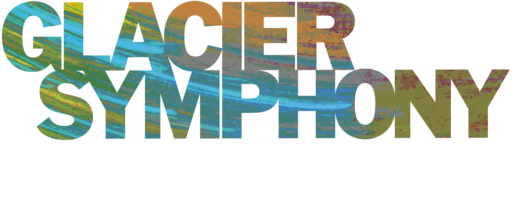Music Theory
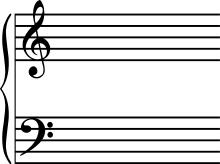
To the left you see the beginning building block of music...the staff. On the top is the treble staff and on the bottom is the bass staff. At the beginning of each staff you see a symbol that tells you which of the staffs you are located in - the treble clef (or G clef as it is sometimes called) on the top and the bass clef on the bottom. These are the two staffs used, for instance, in piano pieces and are the most common. Each of the lines and spaces on the two staffs represents a different note or pitch. Higher-pitched notes will be on the treble staff, but on either staff as the notes ascend, they get higher in pitch and as they descend, lower in pitch. When the two staffs appear together we call it a grand staff.
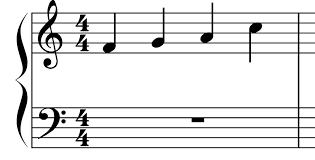
Another thing that we find at the beginning of the staff is the time signature - how many beats are contained in each measure, and which note value is equivalent to a beat. The top number tells how many beats and the bottom, what kind of note. So in the example to the left, "4/4" means 4 beats to the measure and the quarter note gets one beat. Do you see the line on the right that crosses both staffs? That is how we indicate where one measure ends and another begins.
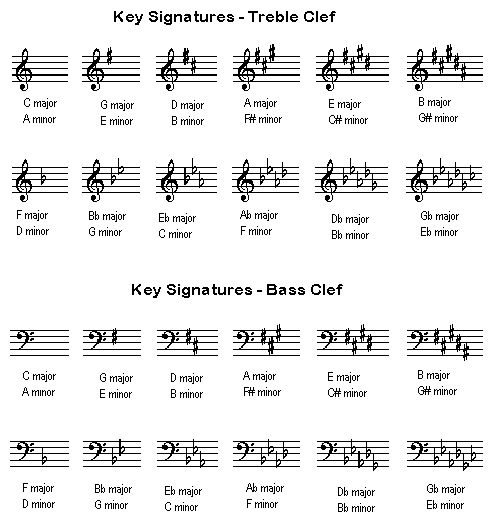
The last thing we find at the beginning of the staffs is the key signature. Using sharps (♯) or flats (♭) this is where we see what is the tonal center of our piece or the starting note of the scale will we use to play or write the piece of music. This chart outlines the key signatures as they appear in both the treble and bass clefs. Note there are two names for each key signature. That is because both a major key and its relative minor use the same key signature, but have a different tonic, or starting note. Major keys sound "happy" while minor keys sound "sad".
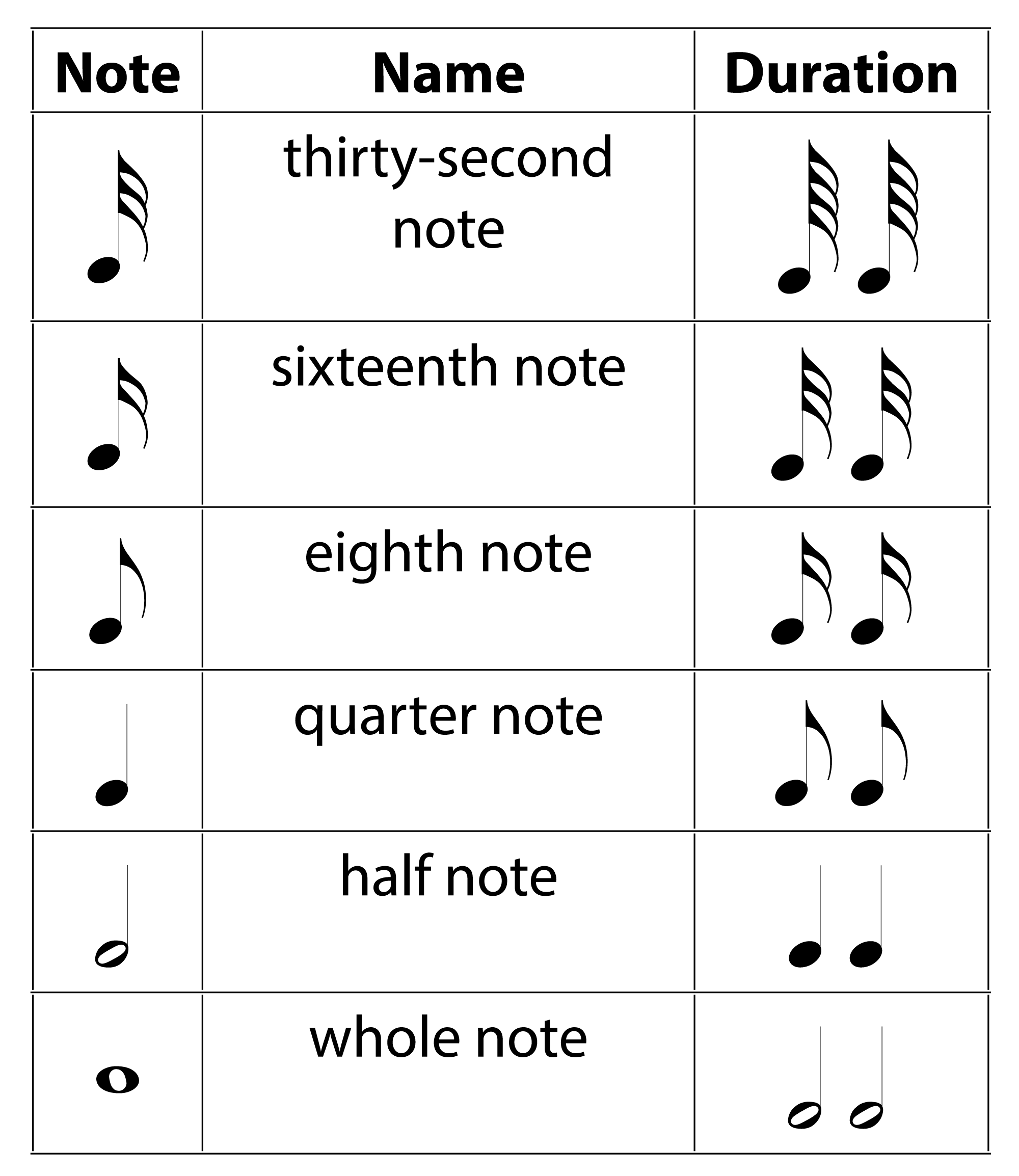
So what are these notes that we use to write music? Notes are the symbols we use to indicate a musical sound. What it looks like tells us how long a note should sound. Each note has one, two or all of three parts: the note head, the stem and the flag. On this chart the shortest notes are at the top and descend to the longest note, the whole note. So you can see as you add more parts to the note head, the shorter the duration. And you can also see that each subsequent note is twice as long as the next (or half as long if you are going from the bottom up).
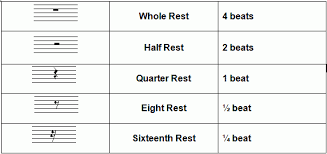
We also have symbols we use to indicate the absence of sound in a piece of music. Those symbols we call rests. Like notes, what they look like tells us how long there should be no sound.
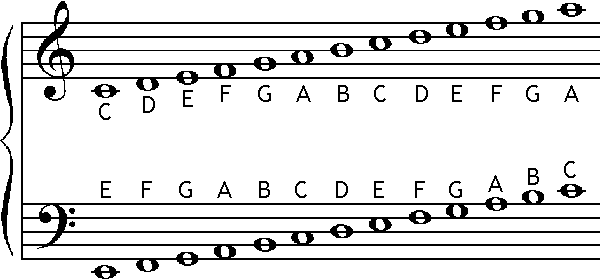
So here we have the names of the notes - lines and spaces - on both the treble and bass staffs. The names of the notes range from "A" - "G" in our alphabet. You will notice that there are some notes below and above the staffs as well. The highest note on the bass staff and the lowest note on the treble staff are the same note in pitch - a "C". This note we call "middle C". When there are 8 notes going up the staff alternating spaces and lines we call that an octave scale. Start at middle C on the treble staff and count up 8 notes to the next C and you have a C major scale.

So far on this page we have seen single notes on a staff. But what do we call them if they are stacked like they are to the left? When this happens, the notes are all played at the same time and are called chords. A chord of three notes like we see here is called a triad. Here we see the triads on the treble staff in the key of C major.
